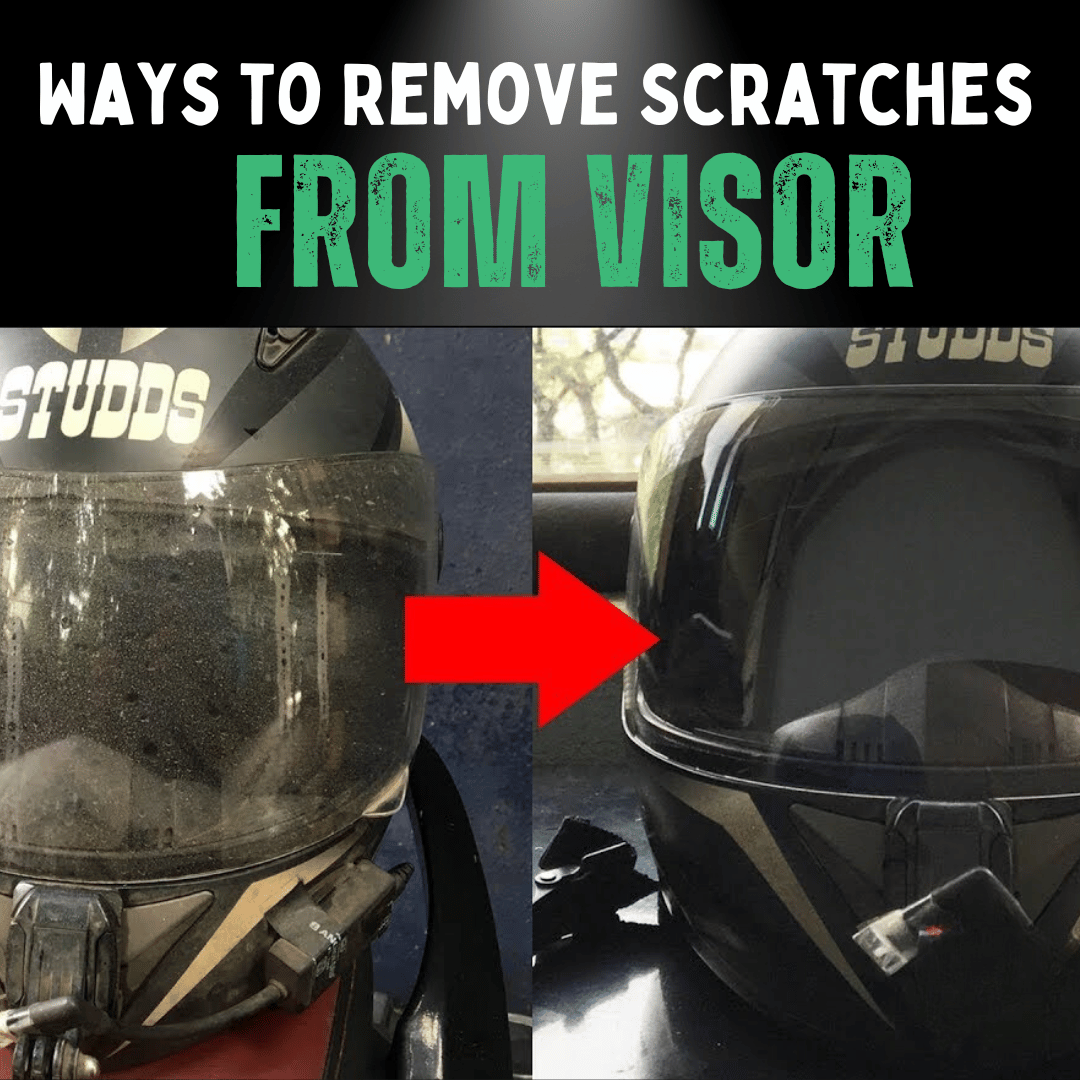
Published: 24.8.23
Updated: March 24, 2025
Love the open road? Scratched helmet visors can blur your ride. Discover surprising fixes to restore clarity and ride safely!
Ways to Remove Helmet Visor Scratches
| Step | Method | Instructions |
|---|---|---|
| 1 | Clean Surface | Wash with water and dish detergent, rinse, dry with soft cloth. |
| 2 | Rubbing Alcohol | Apply to cloth, rub scratches in circles, rinse, dry. |
| 3 | Toothpaste | Spread thin layer, rub with soft cloth, rinse, dry. |
| 4 | Sandpaper | Wet 2000-grit sandpaper, rub gently 15 mins, rinse, dry. |
| 5 | Power Buffer | Use with soapy water, buff scratches out, rinse, dry. |
Why a Clear Visor Matters
Scratches distort vision and increase glare—safety risks you don’t want. A clear visor enhances every ride!
Related: Get The Right Motorcycle Helmet Fit
Scratch Types and Best Fixes
Not all scratches are the same. Here’s how to tackle them:
- Surface Scuffs: Light marks—use toothpaste or rubbing alcohol.
- Deep Scratches: Tough ones need sandpaper or a power buffer.
- Swirl Marks: From rough cleaning—power buffer works best.
Related: Why Do Dirt Bike Helmets Have Visors?
Tools You’ll Need
Get these ready: water, dish detergent, soft cloth, rubbing alcohol, non-gel toothpaste, microfiber cloth, 2000-grit sandpaper, power buffer polisher.
Method 1: Clean the Surface

Start clean—wash with soapy water, rinse, and dry gently. It’s the foundation for all fixes.
Related: How to Clean Your Dirt Bike Helmet
Method 2: Rubbing Alcohol
Dab rubbing alcohol on a cloth, rub scratches lightly, rinse, and dry. Simple and effective!
Method 3: Toothpaste

Spread non-gel toothpaste, rub with a soft cloth, rinse off. A surprising visor savior!
Method 4: Sandpaper

Wet 2000-grit sandpaper, rub gently for 15 minutes, rinse, dry. Patience pays off here.
Method 5: Power Buffer Polisher

Buff with soapy water until scratches vanish, rinse, dry. Perfect for tough jobs!
Related: Visor vs Goggles: Motorcycle Safety Tips
Precautions to Take
- Don’t Rush: Take your time to avoid worse scratches.
- Test First: Try methods on a small spot.
- Soft Cloths Only: Skip abrasive materials.
How Long Fixes Last
- Short-Term: Toothpaste and alcohol—quick but temporary.
- Medium-Term: Sandpaper lasts months.
- Long-Term: Power buffer with coating endures longest.
More Visor Tips
Related: 8 SIMPLE Steps to the Ultimate Motorcycle Visor Upgrade
Wrap-Up
Five easy ways to clear your helmet visor in 2025—safety and a great view await. Which will you try?
FAQs
What Causes Visor Scratches?
Dirt, debris, or mishandling while removing the helmet.
Do These Work on Motorcycle Visors?
Yes, they suit both bike and motorcycle visors.
How to Prevent Scratches?
Clean regularly, use protective film, store properly.
Ready to Ride Clear? 🚀
Loved our 2025 Helmet Visor Scratch Fixes? Want more riding hacks?
Chat with us on Live Chat or explore RiiRoo.com!










Share:
Who Invented the Dirt Bike? - Evolution of Dirt Bikes
Smooth Carburetor Running: Solving the Choke Mystery